The Most Treacherous Defense in Chess
The Huffington Post, 10/5/11 12:25 PM ET
Named after the Austrian master Ernst Grunfeld, the defense has been around for nearly 90 years. At first, it was looked upon with suspicion: giving white a strong pawn center that could only be tickled by black's dark bishop and other pieces didn't seem to be a fair deal. Those who played the Grunfeld defense knew that it could turn into a nightmare in an instant. But the defense also brought them bright moments, tempted them again and again, and they could not live without it.
Bobby Fischer created the "game of the century" in 1956 against Donald Byrne and he almost beat the world champion Mikhail Botvinnik at the 1962 olympiad in Varna, Bulgaria, with the Grunfeld defense. Garry Kasparov picked it up and played it in the world championship matches against Anatoly Karpov.
The most unlikely convert was Nigel Short, a classical player who liked his pawns to be present in the center. For him the Grunfeld belonged to another universe, but as his coach I thought it made perfect sense to use it against Jonathan Speelman in the 1991 Candidates match in London. Speelman was one of those "diagonal players" who liked to place his kingside Bishop on the long diagonal h1-a8 as white. The Grunfeld steals the diagonal play from white because black's dark bishop has a target in the center. I taught Short the Grunfeld defense in three months and it won him the match.
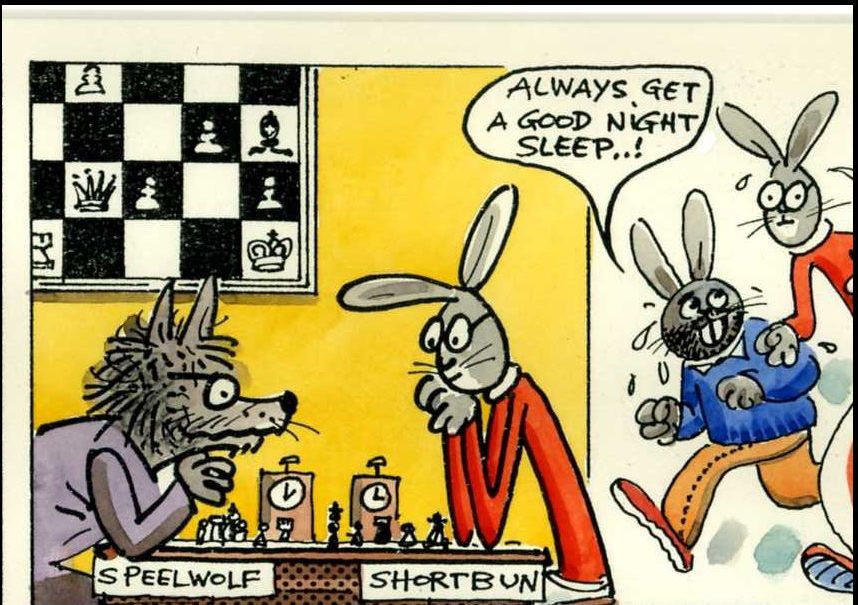
Image by Jan Brychta
When they met in the 1988 Candidates quarterfinal, Speelman won convincingly 3.5 - 1.5. He seemed to have a psychological edge and what was even worse, Short didn't have suitable repertoire for the black pieces against him. No matter what he did, he was playing to Speelman's strength. The Grunfeld changed all that and Short had suddenly something new, fresh and surprising up his sleeve.
Speelman was switching from variation to variation, but in four Grunfeld games he was able to surprise Short only once. When he tried to win in the same variation again, Nigel easily drew by repeating all 27 moves I have analyzed for him the previous night. In the final game Speelman developed his light bishop on the diagonal, but ran into a prepared setup we used to play in Czechoslovakia in the 1960s around the time Short was born. Nigel won the game and the match. Considering the limited time we had to prepare the Grunfeld, it was a miracle.
But Short was not comfortable with the new defense and shortly after the match, he dropped it from his repertoire. With the appearance of Vladimir Kramnik, Kasparov got rid of the Grunfeld defense. But others like Vassily Ivanchuk and Peter Svidler continue to play it. It made huge strides in the last 20 years and more and more people are playing it now.
New books covering the defense come out almost every year and the number of pages grows. Boris Avrukh's two-volume work The Grunfeld defense, published recently by Quality Chess, is more than 600 pages long. The Israeli grandmaster presents ideas from black's point of view, mixing known games with many original analyses. It is a wonderful Grunfeld manual that gives tournament players advice on where to move and what to avoid. And there are many slippery slopes as the miniature game from the recent European Club Cup in the Slovenian town of Rogaska Slatina shows.
In the last round, the Danish grandmaster Pieter Heine Nielsen, who is known as the second of the world champion Vishy Anand, faced Andrei Volokitin. The Ukrainian grandmaster played the Grunfeld reasonably well, followed Ivanchuk's idea of exposing one weak spot in white's camp - the square d3. Volokitin first controlled the weakness from a distance before occupying it with his knight. We all know what the black knight can do on the third rank and on the square d3 in particular. Remember Garry Kasparov's knight from the 16th game of the 1985 world championship match? How it tied up Karpov's pieces almost to the point of zugzwang?
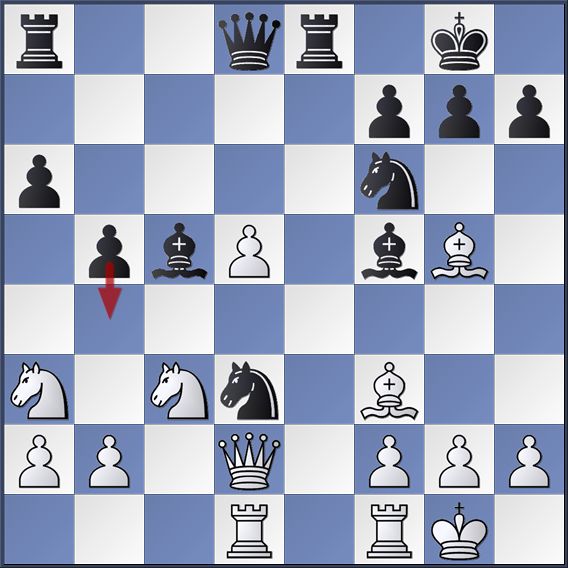
Volokitin aimed his knight at the same square, but didn't react well to Nielsen's novelty. When his horse leaped to d3, it was a losing blunder. Volokitin spent only 21 minutes on his 17 moves before he resigned.
1.d4 Nf6 2.c4 g6 3.Nc3 d5 4.Bf4
(This line against the Grunfeld defense could be tricky and requires a precise reaction. White develops with speed.)
4...Bg7 5.e3 c5 6.dxc5 Qa5 7.Rc1 dxc4 8.Bxc4 0-0 9.Nf3 Qxc5 10.Bb3 Nc6 11.0-0
(White developed his pieces nicely and black has to play a catch-up game.) 11...Qa5 12.h3
(A quiet positional move, creating an escape on h2 for his dark bishop and limiting black's light bishop.)
(This line against the Grunfeld defense could be tricky and requires a precise reaction. White develops with speed.)
4...Bg7 5.e3 c5 6.dxc5 Qa5 7.Rc1 dxc4 8.Bxc4 0-0 9.Nf3 Qxc5 10.Bb3 Nc6 11.0-0
(White developed his pieces nicely and black has to play a catch-up game.) 11...Qa5 12.h3
(A quiet positional move, creating an escape on h2 for his dark bishop and limiting black's light bishop.)
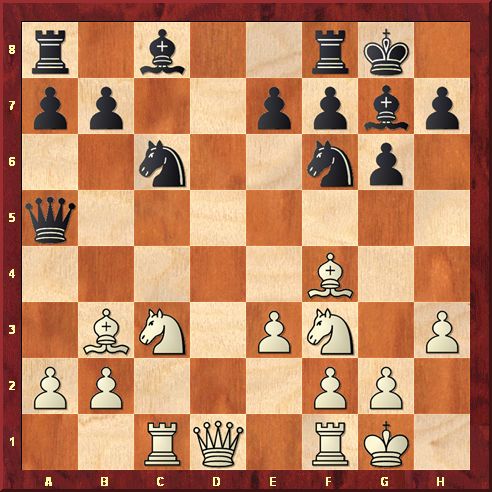
12...Qa6 (The queen controls the diagonal a6-f1 and black is ready to make the white queen uncomfortable with Rf8-d8. Avrukh recommends the natural 12...Bf5 only, which leads to complications after 13.Ng5 e5 14.Bh2 Rad8 15.Bxf7+ Rxf7 16.Qb3 Rdf8 with roughly equal chances.
The swashbuckling exchange sacrifice 13.Qe2 Ne4 14.Nd5 [The currently fashionable 14.g4!? requires a careful study according to Avrukh.] 14...e5 15.Rxc6!? played in London's Park Lane hotel in the 11th game of the 1986 match Karpov-Kasparov, lost its luster. After 15...bxc6!? [Kasparov didn't challenge the sacrifice and played the weaker 15...exf4.] 16.Ne7+ Kh8 17.Nxc6 Qb6 18.Ncxe5 Be6 19.Bxe6 Qxe6 20.Qc2 f5 black has a good game and scored well from this position.)
13.e4 Rd8 14.Qe1
(Solid and reasonable. The aggressive 14.Nd5!? is Romanian grandmaster George Gabriel Grigore's pet line. It could get hairy: 14...Nxd5 15.exd5 Bxb2?! 16.Qc2!? Bxc1 17.Qxc1 Nb4 18.Qc5 [18.d6! Is stronger] 18...Qb6? [An error, leading to a beautiful king's hunt. After 18...Nd3! 19.Qxe7 Bf5 20.d6 Rd7 holds comfortably.] 19.Qxe7 Nxd5 20.Bxd5 Rxd5 21.Qe8+ Kg7
The swashbuckling exchange sacrifice 13.Qe2 Ne4 14.Nd5 [The currently fashionable 14.g4!? requires a careful study according to Avrukh.] 14...e5 15.Rxc6!? played in London's Park Lane hotel in the 11th game of the 1986 match Karpov-Kasparov, lost its luster. After 15...bxc6!? [Kasparov didn't challenge the sacrifice and played the weaker 15...exf4.] 16.Ne7+ Kh8 17.Nxc6 Qb6 18.Ncxe5 Be6 19.Bxe6 Qxe6 20.Qc2 f5 black has a good game and scored well from this position.)
13.e4 Rd8 14.Qe1
(Solid and reasonable. The aggressive 14.Nd5!? is Romanian grandmaster George Gabriel Grigore's pet line. It could get hairy: 14...Nxd5 15.exd5 Bxb2?! 16.Qc2!? Bxc1 17.Qxc1 Nb4 18.Qc5 [18.d6! Is stronger] 18...Qb6? [An error, leading to a beautiful king's hunt. After 18...Nd3! 19.Qxe7 Bf5 20.d6 Rd7 holds comfortably.] 19.Qxe7 Nxd5 20.Bxd5 Rxd5 21.Qe8+ Kg7
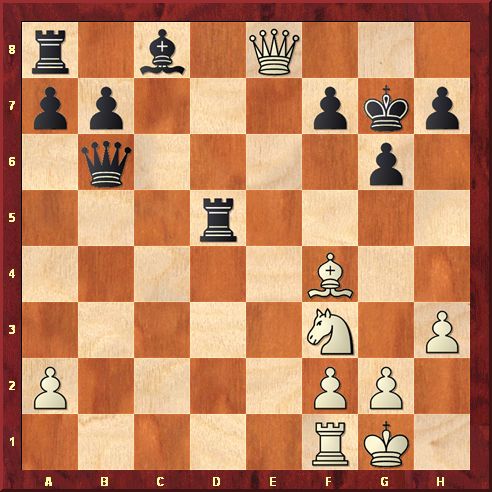
22.Bh6+! Flushing out the black king. 22...Kxh6 [or 22...Kf6 23.Qh8+ Ke6 24.Re1+ Kd6 25.Bf4+ Kc6 26.Qe8+ wins.] 23.Qf8+ Kh5 24.Qxf7 Kh6 25.Qf8+ Kh5 26.Qg7 h6 27.Qe7 Qd8 28.Qe2 (28.Qe4!) 28...g5 29.Ne5+ g4 30.hxg4+ Kh4 31.Kh2 Qc7 32.f4 1-0 Grigore,G (2542)-Sanikidze,T (2559)/Baia Sprie 2009)14...Nb4 15.Ng5!? (A new attempt. Previously, the preferred choice was 15.Ne5 but black can utilize the Qa5-a6 move and play 15...Be6!, equalizing instantly.) 15...e6 (After 15...Nd3 16.Qd2 [16.Bxf7+?! Kf8 17.Qd2 h6 is weaker.] 16...e6 17.Rcd1 white is better.)
16.Rd1 Rxd1 (16...Rd3 or 16...Bd7 are better choices.) 17.Qxd1
16.Rd1 Rxd1 (16...Rd3 or 16...Bd7 are better choices.) 17.Qxd1
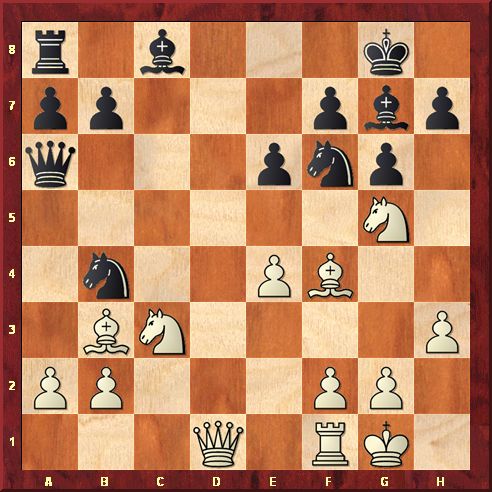
17...Nd3? (Blundering a piece, but black is already under huge pressure. For example
A. 17...Qa5 18.e5 Nfd5 19.Qf3 Nxc3 20.bxc3 Nc6 21.Rd1 Qc7 22.Ne4 with a clear advantage, e.g. 22...Nxe5 23.Qg3 Bd7 24.Qh4 with a winning attack,
B. 17...Nd7 18.Qf3 Qd3 19.Qg4 Nc6 20.Rd1 Qa6 21.Qf3 Nd4 22.Rxd4! Bxd4 23.Nxf7 Kxf7 24.Be5+ Ke8 25.Bxd4 wins;
C. 17...Bd7 18.e5 Nfd5 19.Nxd5 exd5 20.Nxf7! Kxf7 21.Bd2 Nd3 22.Qf3+ Ke8 23.Qxd5 with advantage.)
18.Bc2 (Simple. After18...Nxf4 19.Qd8+ Bf8 20.Qxf6 black is mated soon.) Black resigned.
The 27th European Club Cup ended last Saturday with a victory for the Saint-Petersburg Chess Federation (with Svidler on the top board), ahead of the Azerbaijani team of Socar (led by Teimur Radjabov and Alexander Grischuk). The Czech team of Novy Bor finished third on a tiebreak.
No comments:
Post a Comment